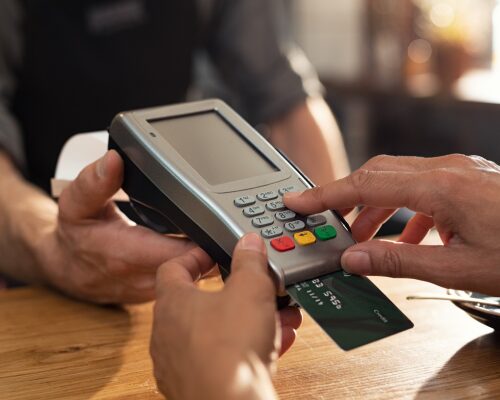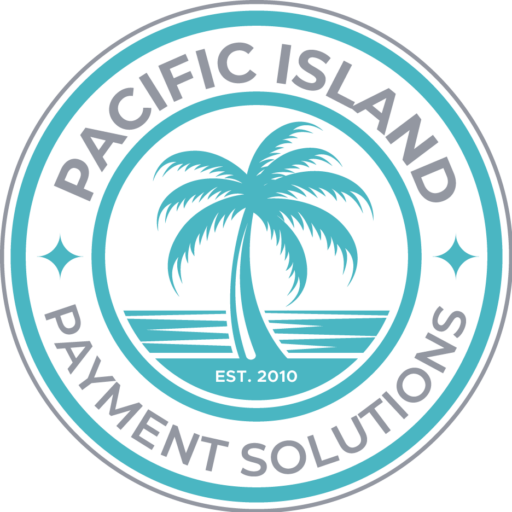Unraveling the World of Payment Gateway Integration
Today, we will begin by understanding what payment gateway integration is and its significance. A payment gateway is a technological service that processes credit card payments for online and traditional brick-and-mortar stores.
This system serves as a digital bridge between a product, the buyer, and the bank, ensuring secure transactions.
Why is this important? In the digital era, it’s all about convenience and security. A payment gateway provides a seamless and secure transaction process, thereby enhancing the customer’s shopping experience and boosting the credibility of the business.
Now, let’s embark on a journey through time to explore the evolution of payment gateway integration. It’s a compelling tale of how technology transformed commerce, right from rudimentary systems that only processed credit cards to sophisticated, multi-channel gateways supporting a plethora of payment methods. Stay tuned as we delve deeper into this remarkable world of payment gateway integration.
Basics of Payment Gateways
A payment gateway serves as the equivalent of a physical point-of-sale terminal located in most brick-and-mortar retail operations. It’s a conduit between an e-commerce website and the bank that authorizes (or declines) a customer’s credit card payment.
How Payment Gateways Work
The working of a payment gateway involves a series of steps. Initially, the customer places the order on the website and opts to pay via credit/debit card.
The web browser encrypts the data to be sent between it and the vendor’s web server. Once the payment gateway receives this data, it forwards it to the merchant’s acquiring bank.
From there, the message goes to the card association (Visa/MasterCard) before it finally reaches the issuing bank for the customer’s card. The issuing bank sends a response back through the same path, either approving or denying the transaction.
Types of Payment Gateways
There are primarily three types of payment gateways: Redirects, Checkout on site, payment off-site, and Checkout on site, payment on site. Redirects take customers to another website to complete the purchase.
Checkout on site, payment off-site gateways allow customers to enter their payment details on the merchant’s website but the process is handled by a third-party gateway.
Lastly, checkout on site, payment on-site gateways allow customers to enter payment details and complete the purchase directly on the merchant’s website.
Key Players in Payment Gateway Integration
Major Companies
The payment gateway industry is dominated by several key players who have long-established their presence.
PayPal
One of the most renowned payment gateways, PayPal offers services in over 200 markets globally, and allows customers to send, receive, and hold funds in 25 currencies.
Stripe
Stripe focuses on the technical, fraud prevention, and banking infrastructure necessary to operate online payment systems. Its user-friendly interface and highly effective security measures make it a favorite among businesses.
Square
Originally designed to help small businesses accept credit card payments, Square now offers a full suite of hardware and software tools.
Emerging Innovators
While the market holds strong with major players, it’s also witnessing the entry of innovative newcomers.
Braintree
A division of PayPal, Braintree provides businesses with the ability to accept payments online or within their mobile application. It’s known for its flexible and robust API.
Adyen
Adyen is a global payment company offering services such as point-of-sale (POS) systems and e-commerce payment solutions. It’s catching the eye of many businesses with its single-platform offering.
Checkout.com
Checkout.com is an online payment solution that combines gateway, acquiring, and risk management services in one platform, offering tailored solutions to businesses.
Benefits of Payment Gateway Integration
Integrating a payment gateway into your online platform offers several advantages that significantly contribute to the overall growth of your business. Here are a few key benefits:
Streamlined Transactions
The main advantage of implementing a payment gateway is the smooth transaction process it offers. It simplifies the management of transactions by automatically routing payments to the designated bank account without the need for manual intervention, saving time and effort for both businesses and customers alike.
This streamlined process results in more efficient, faster, and error-free transactions, enhancing operational efficiency.
Enhanced Security Measures
Security is paramount in online transactions. Payment gateways use advanced encryption technology and adhere to the Payment Card Industry Data Security Standard (PCI DSS) to ensure the secure transmission of confidential data.
They also employ fraud detection tools to identify and prevent suspicious activities, providing an extra layer of security. These rigorous measures offer peace of mind to customers and businesses by safeguarding sensitive information and minimizing the risk of fraudulent transactions.
Improved User Experience
A seamless and secure payment process not only facilitates transactions but also significantly improves the user experience.
A payment gateway offers multiple payment options, including credit cards, debit cards, and digital wallets, providing customers with the convenience of choosing their preferred payment method.
Furthermore, with features like one-click checkout and saved card details, payment gateways simplify the checkout process, leading to a lower cart abandonment rate and higher conversion rates.
By delivering a streamlined and hassle-free payment experience, they contribute to customer satisfaction and loyalty.
Challenges in Integration
As with any technology, integrating a payment gateway into your online platform comes with a unique set of challenges. These hurdles, if not addressed appropriately, can hamper the seamless operation of your online transactions. Let’s delve into some of these challenges.
Security Concerns
Security remains a top concern for businesses when integrating a payment gateway. Despite the use of advanced encryption and fraud detection tools, the risk of data breaches and payment fraud exists.
These concerns necessitate constant vigilance and regular system updates to fortify security measures, adding to the operational challenges for businesses.
Technical Hurdles
The actual process of integrating a payment gateway can be technically complex. It involves a robust understanding of various payment protocols and the compatibility of the gateway with existing platforms or systems.
Inadequate technical know-how can lead to improper integration, resulting in system glitches, failed transactions, and unsatisfactory user experiences.
Compliance Issues
Payment gateways must adhere to several regulatory standards such as the Payment Card Industry Data Security Standard (PCI DSS). Ensuring compliance can be complex and time-consuming, and non-compliance can lead to severe penalties.
Additionally, cross-border transactions may involve navigating through different regional regulations and tax laws, further complicating compliance matters.
Step-by-Step Integration Process
Integrating a payment gateway into your website involves several crucial steps, each contributing to the successful operation of online transactions.
Choosing the Right Payment Gateway
The first step involves selecting a suitable payment gateway. This decision should be based on several factors, including transaction fees, payment methods offered, security measures, customer service, and ease of integration.
The chosen gateway should align with your business needs and provide a seamless payment experience for your customers.
Preparing Your Website
Before integrating the payment gateway, it’s critical to prepare your website. This involves ensuring your website is secure and user-friendly and provides a streamlined checkout process.
It’s advisable to have an SSL certificate for your website, as it encrypts sensitive information like credit card numbers and enhances your website’s credibility.
API Integration Steps
Once the website is prepared, you can begin integrating the payment gateway. This process often involves the following steps:
Register for API Credentials
The first step is to register for API credentials with your chosen payment gateway provider. This typically involves creating an account and obtaining an API key.
Install the Gateway
Once you have received your API key, the next step is to install the gateway on your website. This process can vary depending on the platform you are using.
Configure the Gateway
After installation, you need to configure the gateway settings to suit your business needs. This includes setting the transaction currency, defining payment methods, and customizing the checkout experience.
Test the Gateway
Before launching, it’s crucial to test the gateway to ensure it’s working correctly. This involves making test transactions and ensuring payments are correctly routed to the designated bank account.
Go Live
If everything works as expected during testing, you can make the payment gateway live on your site.
Remember, while this is a general overview, the exact process may vary depending on the specific gateway you choose.
Mobile Payment Integration
In an era where smartphones are a staple in our daily lives, integrating mobile payment gateways into your online platform is not just an option but a necessity.
The mobile era has brought about a shift in consumer behavior, making mobile payments the preferred mode of transaction for many users.
This preference can be attributed to the convenience and speed it offers – purchases can be made anytime, anywhere, with just a few taps on a mobile device, making it a seamless experience for the user.
Additionally, it also opens up opportunities for businesses to tap into a broader customer base, increase sales, and enhance customer loyalty by providing a versatile and efficient payment method.
When implementing mobile payment integration, certain best practices can help ensure a secure and seamless user experience.
Firstly, prioritize mobile-friendly design – the payment interface should be intuitive and easy to navigate on a mobile screen.
Secondly, ensure high levels of security by using trusted payment gateways that offer top-notch encryption and fraud detection mechanisms.
Additionally, you should offer a variety of payment options, including mobile wallets and UPI, to cater to different customer preferences.
Finally, regularly test and update the system to fix any bugs and keep up with changing payment trends and technologies. Implementing these practices will not only offer your customers a superior transaction experience but also help build trust in your platform.
E-commerce and Payment Gateway Integration
In the world of digital commerce, e-commerce platforms and payment gateway integration go hand in hand. The success of an e-commerce business depends largely on providing a seamless and secure online shopping experience, and an integral part of this experience is the payment process.
For e-commerce platforms, payment gateway integration needs to be tailored to meet specific requirements.
Firstly, the integration process should align with the platform’s infrastructure, offering compatibility with its technological framework. This might require the use of specific APIs or SDKs provided by the payment gateway.
Secondly, the gateway should support the various payment methods preferred by the target audience, like credit/debit cards, mobile wallets, or net banking. It’s also crucial to ensure that the gateway supports multi-currency transactions if the e-commerce platform caters to a global audience.
Furthermore, the gateway should adhere to PCI DSS standards, ensuring secure transaction processing and safeguarding customer data. Lastly, the checkout process should be smooth and quick, reducing the chances of cart abandonment and enhancing customer satisfaction.
Security Measures in Payment Gateway Integration
In the realm of online transactions, security is paramount. There are several measures that can be employed to ensure safe transactions when integrating a payment gateway.
SSL Encryption
SSL (Secure Socket Layer) encryption is a critical element in maintaining the security of online transactions. It creates a secure link between a web server and a browser, ensuring that all data transferred between the two remains private and integral.
It prevents hackers from reading or tampering with the data during transit, thus securing sensitive information such as credit card details that users enter on your website.
Two-Factor Authentication
Two-factor authentication (2FA) is another robust security measure used in payment gateways. It provides an additional layer of security by requiring users to verify their identity using two different methods before a transaction can be completed.
These methods could include something the user knows (like a password), something the user has (like a mobile device), or something the user is (like a fingerprint). This makes it more difficult for unauthorized users to gain access to your customers’ accounts.
Compliance Standards
Compliance with industry standards is another important aspect of payment gateway security. One key standard is the Payment Card Industry Data Security Standard (PCI DSS), which sets the requirements for organizations that handle cardholder data for major credit cards.
Compliance with this standard ensures that your payment gateway has robust security measures in place to protect customer information.
It requires a secure network, regular monitoring and testing of networks, maintaining a vulnerability management program, and implementing strong access control measures, among other things.
Summary
In conclusion, the integration of a payment processor is a strategic necessity in today’s digital world. A well-integrated payment gateway can significantly enhance the user experience on your platform, making transactions seamless and secure.
The rise of mobile payment gateway providers emphasizes the need for mobile payment integration, catering to shifts in consumer behavior and expanding your customer base.
Additionally, the tailored integration of payment gateways for e-commerce platforms is essential for providing a smooth checkout process, supporting various payment methods, and facilitating multi-currency transactions as well as the smooth processing of recurring payments.
It is equally crucial to prioritize robust security measures, such as SSL encryption, two-factor authentication, and compliance with PCI DSS standards, to protect sensitive customer data. B. Importance of Strategic Integration.
Strategic integration of payment processing is not merely a matter of technological implementation for a merchant account. It is a pivotal business decision that can influence your platform’s usability, customer trust, and ultimately, your bottom line.
By following best practices and staying abreast of any evolving payment gateway solution, businesses can ensure their payment gateway integration supports their strategic goals and delivers an optimal customer experience.









